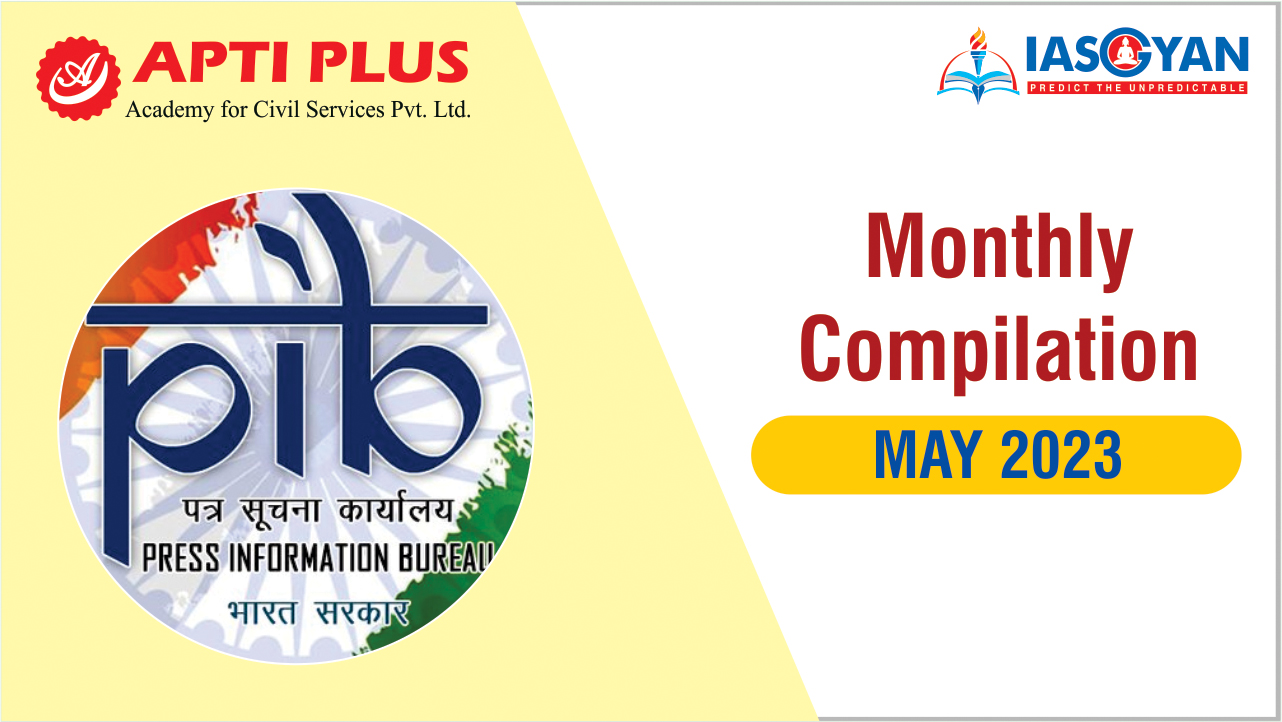
Copyright infringement not intended
Context: According to the latest UN inter-agency estimates, India’s child wasting rate was 18.7% in 2020, which means that nearly one in five children under five years of age in India suffered from wasting. This is higher than the global average of 6.7% and the South Asian average of 14.4%.
Details
- India also has the highest number of wasted children in the world, with an estimated 25.5 million children affected by this condition.
- Wasting is a condition that indicates acute undernutrition and is characterized by low weight for height.
- It can lead to an increased risk of mortality, infections, and impaired growth and development.
- The important findings The 2023 Edition provides global, regional and country trends for stunting and overweight from 2000 through 2022.
- Only roughly one-third of all nations are 'on track' to decrease the number of stunted children by 2030, with an assessment of progress to date impossible for about one-quarter of countries.
Key Highlights of the Report
Wasting
- In 2020, nearly 18.7% of Indian children were affected by wasting as a result of inadequate nutrient intake and/or chronic diseases.
- India is the largest country in Southern Asia, and it is home to half of the world's wasted children. In 2022, an estimated 45 million children under the age of five (6.8%) were affected by wasting, with 13.6 million (2.1%) suffering from severe wasting.
- More than three-quarters of all children with severe wasting live in Asia, with the remaining 22% living in Africa.
- Children suffering from wasting have decreased immunity, are more likely to experience long-term developmental deficits, and are at a higher risk of death, especially if the wasting is severe.
Stunting
- In 2022, India's stunting rate was 31.7%, down from 41.6% in 2012.
- Stunting is expected to affect 148.1 million children under the age of five worldwide in 2022, accounting for 22.3% of all children under the age of five. Almost all of the children affected lived in Asia (52% of the world share) and Africa (43% of the global share).
- Stunting is a disastrous outcome of inadequate nutrition throughout pregnancy and early life.
- Stunted children may never reach their full height potential, and their brains may never develop to their full cognitive potential.
Overweight
- Globally, 37 million children under the age of five are overweight, a rise of about 4 million since 2000.
- Childhood obesity arises when a child's caloric intake from food and beverages exceeds their energy requirements.
- In 2022, India's overweight percentage was 2.8%, up from 2.2% in 2012.

Causes of wasting
- Causes of wasting are complex and multifactorial, but some of the key factors include poor maternal nutrition, inadequate breastfeeding and complementary feeding practices, frequent infections, lack of access to clean water and sanitation, and poverty.
- The COVID-19 pandemic has also exacerbated the situation by disrupting essential health and nutrition services, reducing household income and food security, and increasing stress and anxiety among caregivers.
Suggestions made
- To address this serious public health problem, India needs to implement a comprehensive and multisectoral approach that focuses on prevention as well as treatment of waste.
- Some of the interventions that have proven to be effective include;
- Promoting optimal maternal nutrition during pregnancy and lactation
- Supporting early initiation and exclusive breastfeeding for the first six months of life
- Providing timely and appropriate complementary feeding for children aged 6-23 months
- Ensuring micronutrient supplementation and deworming for children and women of reproductive age
- Screening and referring children with waste for the appropriate management
- Strengthening health systems and community-based platforms to deliver quality nutrition services.
Report Conclusion: India has made some progress in reducing child waste over the years, but more efforts are needed to achieve national and global targets. By investing in nutrition, India can not only improve the health and well-being of its children, but also enhance their cognitive development, educational attainment, and economic productivity in the future.
Child Malnutrition in India
About
- India is one of the worst-performing countries on child health indicators, with high rates of undernutrition, stunting, wasting and mortality among children under five.
- According to the latest National Family Health Survey (NFHS-5), conducted in 2019-20, more than one-third of children under five are stunted and more than one-fifth are wasted in India.
- These figures show a reversal of the gains made in the previous survey (NFHS-4) in 2015-16.
- The Covid-19 pandemic has further exacerbated the situation, disrupting essential services and livelihoods of millions of poor families.
Causes and Consequences of child malnutrition
- Child malnutrition is a complex and multifaceted problem that requires a holistic and multisectoral approach.
Poverty and food insecurity
- Many households lack access to adequate and diverse food, especially during times of crisis such as droughts, floods or pandemics.
- Poor families often resort to coping strategies such as reducing meal frequency, quantity or quality, which can compromise the nutritional status of children.
Maternal health and nutrition
- The health and nutrition of mothers during pregnancy and lactation have a direct impact on the growth and development of their children.
- Many Indian women suffer from anaemia, low body mass index, infections and other complications that can affect their ability to provide optimal care and nutrition to their children.
- Maternal mortality is also high in India, leaving many children orphaned or vulnerable.
Infant and young child feeding practices
- Optimal feeding practices for infants and young children include early initiation of breastfeeding within one hour of birth, exclusive breastfeeding for the first six months, timely introduction of complementary foods after six months, and continued breastfeeding for up to two years or beyond.
- However, many Indian mothers face barriers such as a lack of awareness, support, time or resources to follow these recommendations.
- According to NFHS-5, only 54% of children under six months are exclusively breastfed and only 42% of children aged 6-23 months receive a minimum acceptable diet.
Water, sanitation and hygiene (WASH)
- Poor WASH conditions can expose children to infections such as diarrhoea, which can impair their absorption and utilization of nutrients.
- Diarrhoea is one of the leading causes of death among children under five in India.
- NFHS-5 shows that only 59% of households have access to improved sanitation facilities and only 35% have piped water supply.
Health care services
- Access to quality healthcare services is essential for preventing and treating common childhood illnesses such as pneumonia, malaria, measles and malnutrition.
- Immunization is also crucial for protecting children from vaccine-preventable diseases. However, many Indian children do not receive adequate health care due to a lack of availability, affordability or acceptability of services.
- NFHS-5 reveals that only 62% of children aged 12-23 months are fully immunized and only 60% of children under five received any treatment for acute respiratory infection
The consequences of child malnutrition are severe and long-lasting
- Malnourished children are more likely to suffer from impaired physical growth, cognitive development, immunity and productivity.
- They are also more prone to chronic diseases such as diabetes, hypertension and cardiovascular diseases in adulthood.
- Child malnutrition also has economic and social costs for the individual, the family and the society at large.
Steps taken by the government to address child malnutrition
Integrated Child Development Services (ICDS)
- This is the flagship programme for providing a package of services such as supplementary nutrition, health check-ups, immunization, preschool education and counselling to pregnant women, lactating mothers and children under six years through a network of Anganwadi centres across the country.
National Health Mission (NHM)
- This is an umbrella programme for strengthening the health system and improving the delivery of maternal, newborn, child and adolescent health services at various levels.
Pradhan Mantri Matru Vandana Yojana (PMMVY)
- This is a conditional cash transfer scheme for providing maternity benefits of Rs 5000 to eligible pregnant women and lactating mothers for meeting their nutritional needs and partially compensating for wage loss.
Poshan Abhiyaan (National Nutrition Mission)
- This is a multi-ministerial convergence mission for improving nutrition outcomes among children under six years, adolescent girls, pregnant women and lactating mothers by leveraging technology, behavioural change communication, capacity building and inter-sectoral coordination.
Mid-Day Meal Scheme (MDMS)
- This is a school-based programme that provides cooked meals to children studying in classes I-VIII in government and government-aided schools.
- The objectives are to improve enrolment, attendance and retention of children in schools, as well as to enhance their nutritional status.
Way Forward
- The NFHS-5 data shows that many states have witnessed a rise in stunting, wasting and underweight rates among children under five since the previous survey in 2015-16. This indicates a systemic failure in the implementation and monitoring of nutrition programmes, as well as a lack of convergence and coordination among various stakeholders.
- To overcome these gaps and accelerate progress towards achieving the Sustainable Development Goals (SDGs) related to nutrition, India needs to adopt a comprehensive and holistic approach that addresses the underlying determinants of malnutrition, such as food security, sanitation, water supply, education and gender equality.
- India also needs to strengthen its data systems and evidence base to track the outcomes and impact of nutrition interventions and to identify and address the specific needs and vulnerabilities of different regions and populations.
- India needs to enhance its political commitment and resource allocation for nutrition and foster a culture of accountability and transparency among all actors involved in nutrition governance.

Conclusion
- Child malnutrition is a serious threat to India's human capital and economic potential. It requires urgent action and collective responsibility from all sectors of society. By investing in nutrition today, India can ensure a healthier and more prosperous future for its children and generations to come
Must Read Articles:
Malnutrition in India: https://www.iasgyan.in/daily-current-affairs/malnutrition-in-india-23
|
PRACTICE QUESTION
Q. Child malnutrition is a serious public health problem in India, affecting millions of children and contributing to high rates of morbidity and mortality. Despite various government interventions and policies, the prevalence of undernutrition remains high and uneven across different regions and social groups. What are the main challenges and barriers that hinder the effective implementation and scaling up of nutrition programs in India? How can these challenges be overcome?
|
https://www.downtoearth.org.in/news/health/india-s-child-wasting-rate-18-7-as-per-latest-un-inter-agency-estimates-89586














